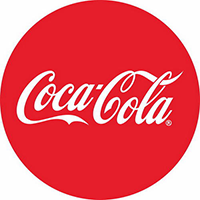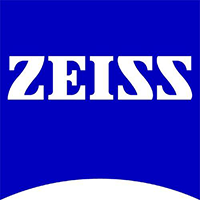Berens is the pioneer of modern architecture and industrial design in Germany, and is regarded as "the father of modern design in Germany". From 1886 to 1891, Bellence received art education at Hamburg Arts and Crafts School, and later switched to architecture. In 1893, he became a member of the Munich Separatists. In 1900, he joined the "Group of Seven" composed of artists, architects and designers to start architectural design activities. In 1907, he became the promoter and leader of the German Manufacturing Alliance. In the same year, he was employed as the art consultant of AEG, a German general electrical company, and began his career as an industrial designer. He also pioneered the modern enterprise identification system. The logo of AEG has been used until now and has become one of the most famous symbols in Europe.

As an industrial designer, Berens has designed a large number of industrial products, such as arc lamps, electric fans, electric kettles, etc., laying the foundation for the functional design style. Berens is also an outstanding design educator. His students include Gropius, Mies and Corbusier, who later became the greatest modern architect and designer in the 20th century.
Peter Berens was born in Hamburg and studied painting in the Academy of Arts. After 1891, he was engaged in book illustration and woodcut creation in Munich. Later, he studied architecture. In 1893, he became a member of Munich's "Youth Style" organization. During this period, he accepted the influence of radical art at that time and was the most important designer of the "Youth Style" movement.


In 1900, Archduke Hessen summoned him to the new art village of Darmstadt, where he turned from art to architecture and became a modern industrial architect before the First World War. Although he participated in the New Art Movement, he was one of the important founders of German modernist design.
Peter Berens has always paid attention to the design exploration of "Vienna Separatists", gradually saw the road of design art reform and development, and realized that the design of the new era must closely combine industrial production technology and material technology to have vitality. From the beginning of the 20th century, Berens began to explore a design path suitable for the production mode of large industrial machinery. He has made remarkable achievements in many fields of design. He is the most famous designer of the German Industrial Alliance and is known as "the first modern art designer".

Berens is also an important figure in the history of graphic design. He was the first to clearly express the new visual design language elements under the new ideas of the 20th century.
In 1900, he published a 25 page booklet Celebration of Life Art:. The typeface without decorative lines is the key factor of modernist graphic design in the 20th century, so Berens can also be regarded as one of the important founders of modern graphic design. In 1901, Berens cooperated with Klinsberg font casting company in Germany to design the compromise font series of "Behrensschrift". This font is a transitional font between "youth style" and modern style, but the use of decorative lines has been basically eliminated. After the Second World War, Minimalism (also known as reductionism) became one of the basic styles of world graphic design.
After studying the history, background and products of AEG, Berens made it clear that the emphasis on industrialization was the center of his design. Through repeated design, he finally designed a very simple and clear logo. This sign is also applicable to the cards, stationery and documents of the company's employees, as well as the machinery, products and buildings of the company. He also designed a large number of graphic projects of the company, including advertisements, posters, product catalogs, etc., always emphasizing the unity of design. He has formed a highly unified corporate image for the company from products to corporate image and promotion, designed a unified formal language, is the earliest and relatively perfect typical work of corporate image design, created a precedent for modern corporate identity plan, and is known as the first person to formulate "corporate style".
Berens is the earliest designer in Germany who was engaged in the design of functional industrial products.
In 1907, the president of AEG, Amy Russ, invited Berens to design the company's logo as an architect and design coordinator, starting his career as an industrial designer. The German Electric Appliance Industry Company is one of the largest manufacturers in the world and the core power of German industry. Its electric lamps, fans and kettles are all products for the world market.
At the same time, Bellence also serves as the art consultant of the company, designing electric lamps, fans, electric kettles and other products for the company. From the perspective of functionalism, he basically abandoned the tedious decoration in the design, and emphasized the appearance, structure and good functions of the product. In particular, the series of electric kettles designed in 1909 can best reflect his design spirit. The pot is designed to adapt to mechanized batch production and standard production. Many parts are standard parts, which can be assembled and combined freely. Different materials, such as nickel plating or copper, are used for surface treatment to achieve different appearance effects. Each of them has three specifications, 0.75 liter, 1.25 liter and 1.75 liter, which can be selected, realizing the unity of function and aesthetics, and is highly praised by the industry. The production program and industrial product samples formulated by Berens still played a role until the 1930s. He also formulated the art design methods of mass production of technically complex products, which later became the professional means of modern art design. Berens' achievements in all aspects of AEG design are a typical example of the goals pursued by the Alliance.

Berens is also a pioneer of modern factory architecture design. One of the demand factors that promote the generation of modern buildings is high-rise buildings, and the other is modern factory buildings. The requirements of modern factories for space, lighting and circulation have promoted the development of modern architecture. The turbine manufacturing workshop and machinery workshop of AEG designed by him are simple in shape and discard any additional decoration, which is the embodiment of the new concept of Belens' architecture. Belens poured his new ideas into the design practice, boldly abandoned the popular traditional style, and adopted new materials and new forms to make the workshop look new. The skeleton of the steel structure is clearly visible. The wide glass panels replace the walls on both sides. The symmetrical proportion of each part weakens the visual effect produced by its huge volume. Its concise and bright appearance is a revolution in the history of architecture. It has the characteristics of a new structure of modern architecture and strongly expresses the concept of the German Industrial Alliance.
Outstanding design educator
In 1903, Berens was appointed as the president of the Dieseldorf Academy of Fine Arts and Crafts to carry out the reform of design education in the school. He believed that the core content of design visual training should be the analysis of the proportion of geometric forms. His emphasis on basic courses, especially the basic training of plane analysis, was completed by his two students and assistants, Walter Gropes and Mies van der Rohe, which laid the foundation for the reform of Bauhaus Design Institute in the future.
Berens set up Berens Design Office in 1907. A group of modernist design masters came to Berens to study and work, including Walter Gropes and Mies van der Rohe, the founders of Bauhaus Design, Le Corbusier, an important representative of modern architecture and urban planning, and the three greatest founders of modernism, who further developed Berens' design philosophy, Let the modernism design idea gradually mature.

Social evaluation
1. Peter Berens' achievements have laid the foundation for the development of modernism, and his exploration in architecture and design has always influenced the present.
2. He helped the German people overcome difficulties in the period of material scarcity, revitalized German industry, accelerated the process of German modernization, and improved the quality and standard of life of Germans.
3. To some extent, his design has set goals for the direction of modern design and become an example for future generations of designers.
Although with the development of the times, his functionalist aesthetics could not fully meet the needs of the contemporary era, without his exploration and innovation, German industrial design would not have the current development.
From German products, we can see his outstanding influence. He is a well deserved modern design master.





















Please feel free to consult us!

